Necronomicon | Interview | “Lovecraftian Progressive Rock”
The legendary underground album, ‘Tips zum Selbstmord’ by Lovecraftian prog rockers Necronomicon was originally released in a complex fold-out cover in 1972.
The band formed in Aachen and was one of the few progressive groups that dared to perform songs in their native language. Walter Sturm (vocals, guitar), Norbert Breuer (vocals, guitar) and Gerd Libber (bass) got together in the summer of 1970. Drummer Harald Bernhard soon joined the group, as well as Fistus Dickmann a bit later on keyboard. Lyrics and band name was taken from the legendary H. P. Lovecraft.
Detlev Hakenbeck took over bass in 1971 and passed it on to Bernhard Hocks in 1972. In its early days, Necronomicon had reenacted pieces by John Mayall, Pink Floyd, Ten Years After, Black Sabbath, Uriah Heep and Deep Purple. At the beginning their material was sung in English. The group decided to record material for ‘History of a Planet’, but then they decided to switch to German texts, written by Norbert Breuer, who wrote about thoughtless environmental destruction, overpopulation, exploitation, injustice and violence.
In spring 1972 they recorded six tracks for an LP on a two-track tape Revox in a small studio in Kerkrade, Holland, of which they had 500 copies produced by Carl Lindström GmbH in Cologne. The title has nothing to do with instructions on suicide, but refers to the devastation of the earth.
The group came up with something very special for the self-adhesive cover: It can be folded out in five ways, i.e. it consists of six square surfaces that when opened form a cross. The holistic concept of the group name, rock music, German lyrics and the title of the LP, realized for the first time in 1972, found its artistic completion in the cover design by Harald Bernhard. In 1973 Dieter Ose took over keyboards and founding member Gerd Libber took over the bass again. Walter Sturm had left temporarily to play for Rufus Zuphall, but came back in 1974. In the same year, when they appeared with a few new pieces, they had an elegant glossy leaflet printed for advertising purposes. It says, among other things:
“Our music should also appeal to those who hardly or never deal with the facts of wars, social grievances and environmental threats. That is why we combine our music with German texts. Necronomicon’s musical style is characteristic of Necronomicon, as far as classification is required. Influences from classical music, jazz, folklore and rock. Polyphonic singing is used as an important sound element. It has been shown at many concerts that the group’s music appeals to a wide audience.”
In 1976 Necronomicon was dissolved. But a few of them couldn’t come to terms with it and eventually continued under the old name. It was Walter Sturm, Harald Bernhard and Dieter Ose. For the bass they got Bernd Oppitz. In the aforementioned four-person line-up, they continued unchanged until 1981 and then finally disbanded. After the sudden and unexpected death of Dieter Ose in August 2007, these recordings of the new lineup were released in 2009 on the CD ‘Strange Dreams’.
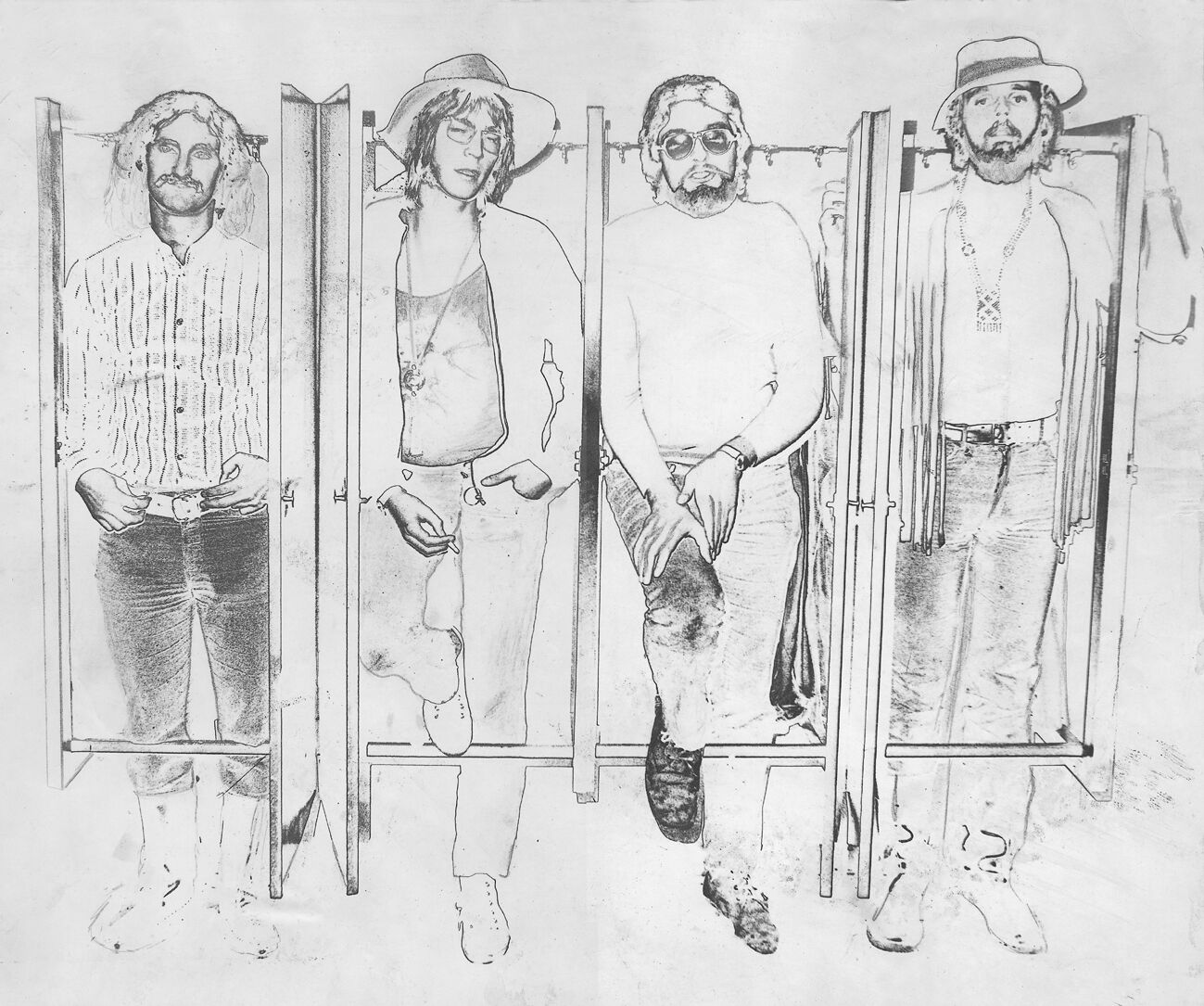
“A warning against collective suicide due to destruction of the own planet”
Do you recall the most important moment in your life when you knew you wanted to become a musician?
Walter Sturm: I never planned to become a professional musician. I started to teach myself guitar at the age of 15 (acoustic guitar). Beforehand I learned to play a recorder and I was a singer in the school choir and at church.
Where did you buy your first guitar and what are some of the songs that kept you practicing?
I got my first guitar for Christmas from my parents. Later on I bought some cheap solid body electric guitars and I started to practice songs by The Shadows and by The Spotnicks. My favorites also were Buddy Holly songs.
You were growing up in Aachen where I guess wasn’t much happening as far as rock and roll goes. Where did you buy new music and which records influenced your style of playing?
Your opinion of Aachen is definitely wrong. There was a big scene of youth clubs – most of them driven by church, but very open. I played a lot there with my first band “The Crickets” (adapted from the Buddy Holly band) and we were rather well known in Aachen. There also were “wilder” bands specialized on songs by The Small Faces, Jimi Hendrix, The Who et cetera. In 1971 there was a big open air festival in Aachen with Deep Purple, Pink Floyd and many other (then) famous bands. My guitar style was highly influenced by Uriah Heep’s Mick Box, but more generally I loved the early Genesis with Peter Gabriel, Yes, Gentle Giant, King Crimson but also Black Sabbath, Pink Floyd, Deep Purple, The Who, Cream and the likes.
Necronomicon formed in 1970. Can you tell us about the pre-Necronomicon years when you were still part of cover bands? What kind of material did you play?
As already mentioned above, I played several years with the Crickets. Our material ranged from Shadows, Spotnicks, Buddy Holly, Beatles, Dave Dee, Dozy, Beaky, Mick & Tich, Manfred Mann, to The Who and Jimi Hendrix Experience.
How did you meet Norbert Breuer, Gerd Libber and Harald Bernhard?
I met Norbert and Gerd at a concert during carnival in Aachen in February 1970 (where I also first met my later wife Doris). I played with The Crickets, Norbert and Gerd with the “Love of Tune” band. I remember they made a very nice performance of the famous Marmalade Song ‘Reflections of My Life’. Harald joined the band later on when we searched for a drummer
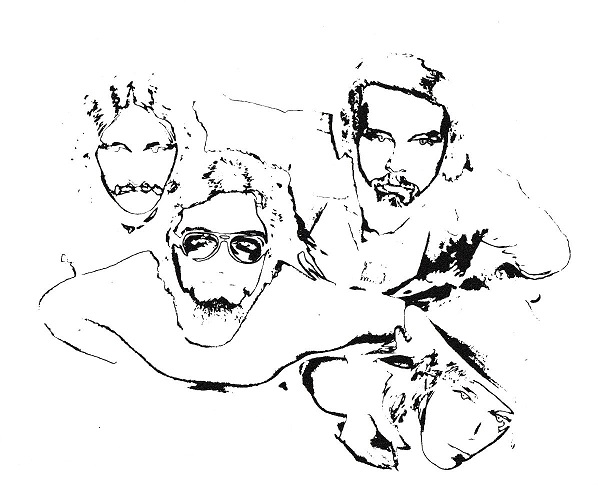
What kind of material did the band play early one, before you started working on your own material?
Mostly cover songs. We started with typical blues songs by John Mayall, Muddy Waters but also Ten Years After. We also had songs by Pink Floyd, Black Sabbath, Deep Purple, Jimi Hendrix Experience.
Tell us about the equipment you had in the band and how you bought it?
We all were students, never planned to become professional musicians and we bought our first musical equipment by installment from a local dealer in Aachen (thanks for his understanding and generosity…). I had a 50 watt Marshall amp and a bass box (can’t remember the brand). My first real rock guitar was a black Les Paul copy. It was one of the first Japanese Les Paul copies, marketed in London under the label “Shaftesbury”. For nostalgic reasons I located one of those again some years ago and I still have it. At the end of 1971 I was able to buy a used Gibson Deluxe gold top Les Paul and this was my guitar until Necronomicon first parted in 1975. As a student I worked with a local newspaper to earn the money I needed for music…
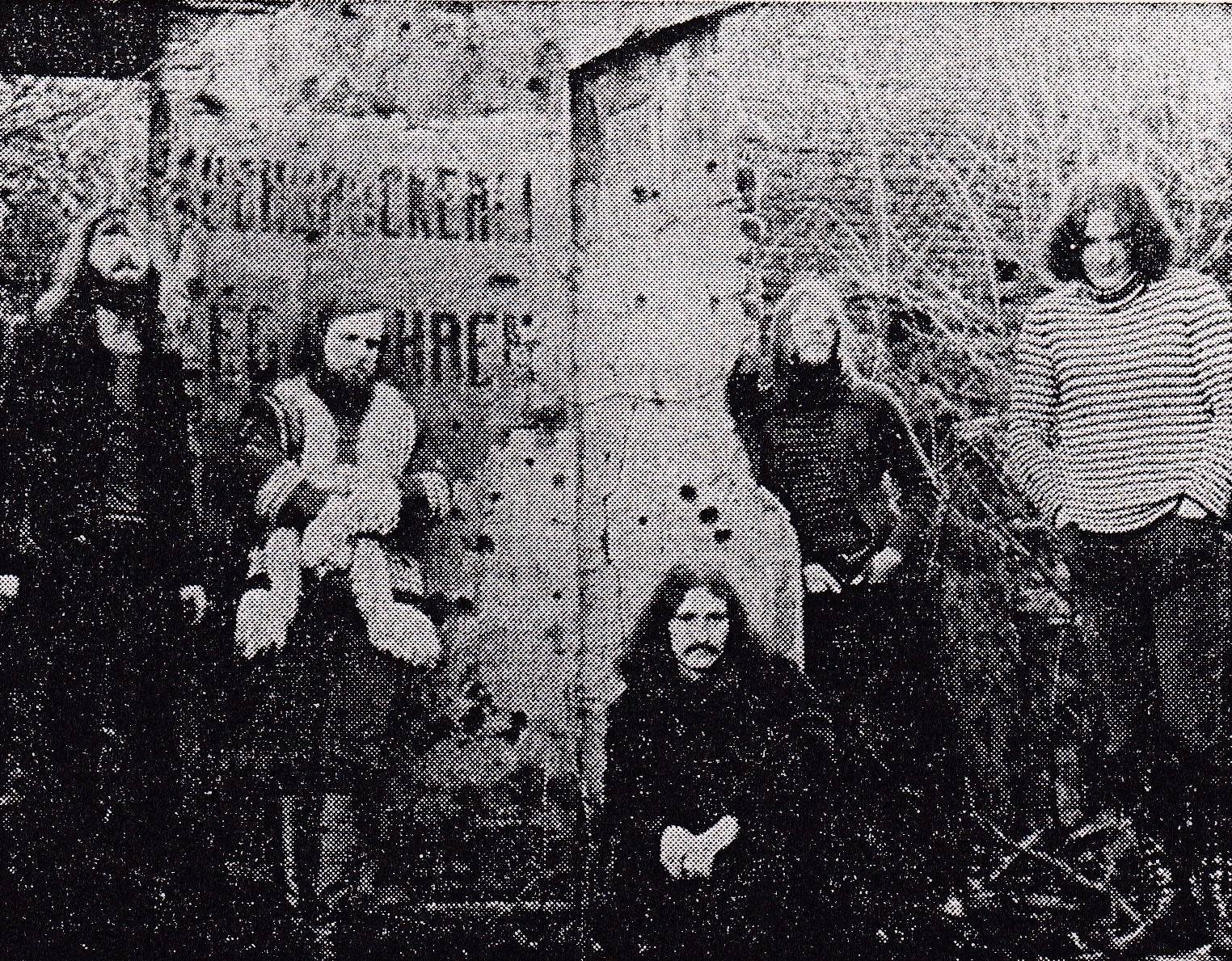
What’s the story behind the daring title of your 1972 album, ‘Tips Zum Selbstmord’? What influenced the sound of the record and what are some of the strongest memories from recording the songs?
After having decided to form a new group in February 1970, first rehearsals started in Summer. At that time, as a student of psychology, I came across the weird stories of H.P. Lovecraft and its invention of the Necronomicon and I proposed this name as it sounded strange and mysterious. It, in the beginning, didn’t have to do anything with the style of our music. No one else in the group was interested in horror stories. After some time of cover song playing, Norbert Breuer came along with some compositions he had made with the idea of creating an opus about the “History of a Planet”.
This was highly influenced by the then upcoming (and now even more important) ideas of mankind destroying its own planet by pollution, wars, exploitation and overpopulation. After having presented this new music style to friends, it was decided to do the words in German (in the beginning it was English) in order to bring the message to our public. In 1971 we were invited as a supporting act for a big concert of the Dutch band Livin’ Blues. For this concert I rented a 100 Watt London City guitar Tower which made a 100% change in the band’s sound. This concert was very successful and somehow served as a breakthrough for our further musical development. At this concert we – for the first time – played some of our own songs in front of a bigger public and they seemed to like it. After this, it was decided to publish some of the new songs on vinyl. We were looking for an impressive title for the record and had the idea to call it ‘Tips zum Selbstmord’ (Instructions for Suicide). This was never meant to give instructions how to make an end to one’s own individual live but to act as a warning against collective suicide due to destruction of the own planet.
Before we started to work on ‘Tips zum Selbstmord’ we realized that we needed a keyboard player. Fistus Dickmann came to the band by appointment of Harald, because they knew each other as students of art. A studio in the nearby Dutch small town Kerkrade (driven by two German guys) was chosen because it could make recordings at a price we could afford (unfortunately at cost of quality, because they only had two Revox machines and recording was more or less “live”, no multichannel recordings). It took about 5 evenings to record the LP. It was more or less a live recording because of the limited technical equipment of the studio. If there was an error, everything had to be done from the beginning… If we had not had a sponsor (Hubert Herwartz, a friend of Norbert with a “rich” father…and a Necronomicon fan from the beginning) the realization of an own vinyl record anyway would have been impossible. We all were students, no professional musicians, and we didn’t want to get under control of music producing companies. We never were interested in doing “mainstream” or even commercial music.
The album was self-released under the name of the label “Best Prehodi”? What does that mean? Where did you press the vinyl and how many copies were pressed? What did the distribution look like; via gigs or?
Our relation to Hubert Herwartz was already mentioned. Since we were our own publisher we wanted to publish under a name made from the initials of our family names. The only trade-off was the P in Bestprehodi. It should have been a B (Bre for Breuer), but we decided that the pronunciation of “Bestprehodi” would be easier than “Bestbrehodi”… The record was pressed by the Carl Lindstroem GmbH situated in Cologne, mostly known under the name “Elektrola”. Otherwise this company was not involved in the production of the LP. 500 copies were pressed. It was not easy to sell the LP, which at that time mainly was sold at concerts and in local music stores. Price was DM 15,00!!!!!! We often got the feedback that our music was too complicated, too many changes of rhythm and musical theme. Concerts were mostly done at youth parties of church or secondary schools.
Would you share your insight on the albums’ tracks?
Six tracks from the “History of a Planet” project were chosen for the vinyl record. Originally the sixth track was thought to be a different version of the song ‘Die Stadt”, later on called ‘Stadt II”. But shortly before going to the studio, Bernhard Hocks (then our bass man) and myself came up with a completely different, more heavy version of ‘Die Stadt” and it was decided to rehearse this version and to use it for recording. The earlier version was only presented twice at concerts and after that was forgotten for a very long time (rediscovered only in 2013). The six tracks for ‘Tips zum Selbstmord’ finally were.
‘Prolog’: A heavy and furious introduction, very much focusing on guitar work and addressing a warning not to be careless with our planet.
‘Requiem der Natur’: A very elegiac song with a nice keyboard tune, a “jazzy” middle part and – then an absolute novelty to rock music – the addition of a church choir in the final part of the song. The words deal with memories of an intact world with birds flying through still green forests, unpolluted air, beautiful flowers growing everywhere.
‘Tips zum Selbstmord’: The rocky title song, accusing mankind of being careless, lacking thoughtfulness and responsibility to save its own life’s surroundings.
‘Die Stadt’: Melodic introduction and end, heavy guitar riffs, fast middle part with wah wah guitar solo. Imaginations of impersonal cities with people not knowing each other, living in small but expensive flats, interested only in maximal personal profit – last goal: heart attack.
‘In Memoriam’: Consecutive heavy and melodic parts. Reflections on a world with unfair distribution of wealthiest, food, room for living, overpopulation.
‘Requiem vom Ende’: Very rocky and partly heavy but also decent song parts. Vision of a world after self destruction. End of the “History of a Planet”.
Unfortunately most of the record topics are valid exactly the same way today, no difference between 1972 and now (see the disastrous end of the Glasgow conference on Climate catastrophe).
What was the typical songwriting process for you?
Mostly one of the group members (most of the time Norbert Breuer) came up with a song idea and we started to work on it, adding guitar and keyboard parts et cetera. On ‘Tips zum Selbstmord’ four of the six tracks originally were ideas by Norbert, two were initiated by me…and also by the duo Sturm/Hocks.
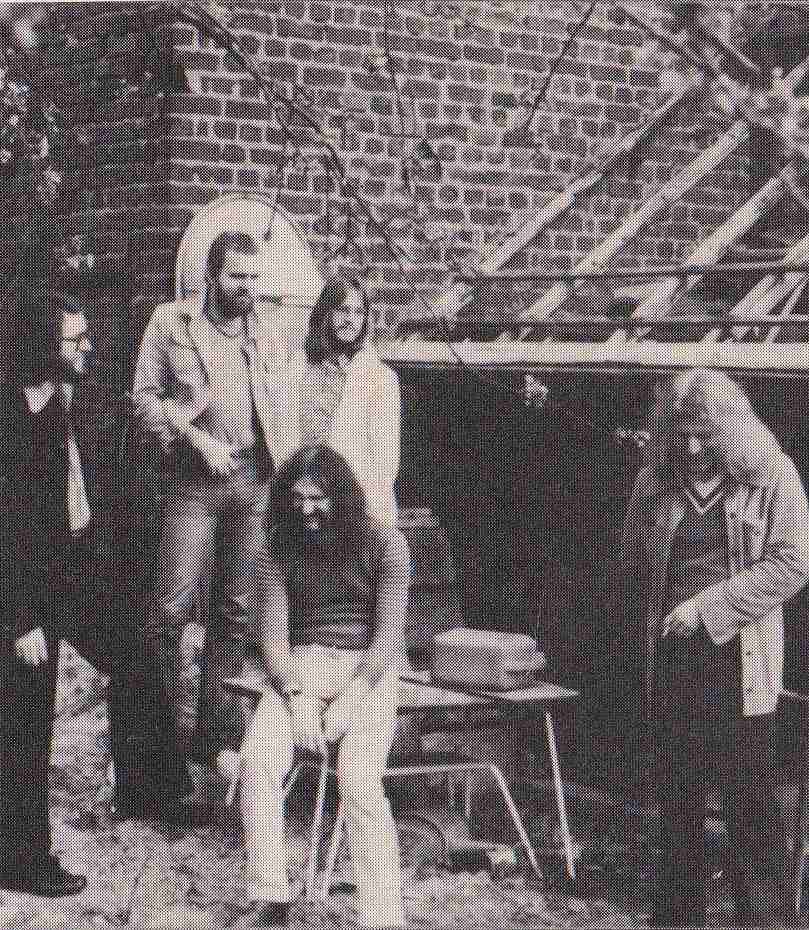
“The lyrics of our songs could very well be written today”
Your lyrics often emphasize ecology problems… isn’t it horrible what we did to the planet? Do you think we will get out of this?
It was and still is horrible. As I already pointed out, the lyrics of our songs could very well be written today and would be valid the same way (or even worse).
Who illustrated the album artwork and were you thinking about the colour version as well?
All covers of Necronomicon and all our concert posters were designed by our drummer Harald Bernhard. He studied graphics in the polytechnic for design in Aachen and he worked many years as teacher of arts in a secondary school in Cologne. Harald Bernhard’s contribution to the (late) success of ‘Tips zum Selbstmord’ is tremendous. Harald and his wife were close friends of mine and my wife. He always was (and still is) a guy full of unorthodox ideas and with a great talent in drawing and painting – and even composing during the last years. We never thought about color versions of our covers, except for the cover of ‘Necronomicon Vier Kapitel’, but this album was not published by ourselves. Nevertheless, Little Wings did a very great job and they put much effort and love into this project.
How did you know the band Rufus Zuphall and what can you tell us about your time with the band?
The complex style of our music was always a matter of debate and criticism inside and outside the group. Fistus Dickmann left in 1973 and was replaced by Dieter Ose, a fabulous keyboardist, but – as an upcoming salesman – in no way related to our social ideas. In early 1973 he and Norbert started to do new compositions, and these were even more complex than those of the 1972 record.
In the 70s, Rufus Zuphall was always the main competitor for Necronomicon in Aachen’s music scene. In 1973, Günther Krause, the front man and guitar player of Rufus Zuphall left the band and Udo Dahmen and Manfred Spangenberg (drummer and bass man of Rufus Zuphall) contacted me on a Necronomicon concert with the question, if I was willing to replace Günther Krause – last but not least in order to give the band a more heavy and rocky sound. At that time the style crisis in Necronomicon was at its maximum and thus I decided to move over to Rufus Zuphall. We rewrote some of their old songs and wrote a number of new ones. We had a rather successful year with many gigs throughout Germany and Holland. We even produced a demo tape as a markup for a new record. Nevertheless, after one year the band split definitively over the decision to become professional or to remain in the amateur status. Thus, I remorsefully came back to Necronomicon, who during this year had set up a completely new program. Very nicely made songs, but some lasting more than 30 minutes…
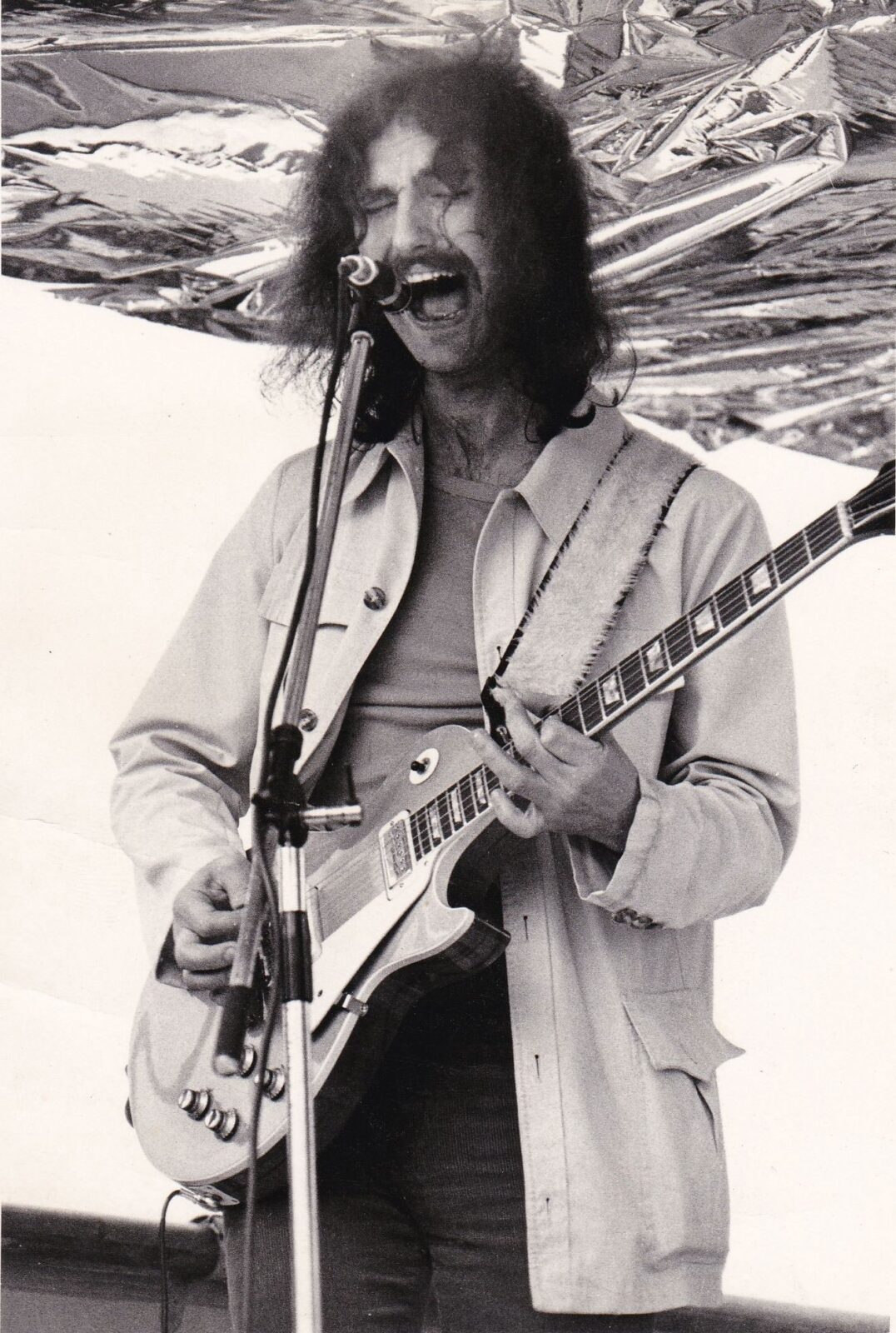
“Our prog rock music with social critical words were much ahead of its time”
Your music was well ahead of its time and you probably (as most of the experimental bands) had trouble gaining a new audience in the era where glam and disco took over.
As I already pointed out, there were no big shows and there was no tour. We had a small group of loyal fans but the biggest concert we ever were acting in was the Livin’ Blues concert. It was not even easy to sell the LP. We often got the feedback that our music was too complicated, too many changes of rhythm and musical theme. Concerts were mostly done at youth parties of church or secondary schools. From ’74 we made concerts with the new songs but for the reasons I already explained the audience became smaller and smaller. I think our prog rock music with social critical words were much ahead of its time and it was more than 15 years after the band decided to break up in its original cast that we noticed that the interest in our music was steadily growing and the 1972 LP was highly sought after.
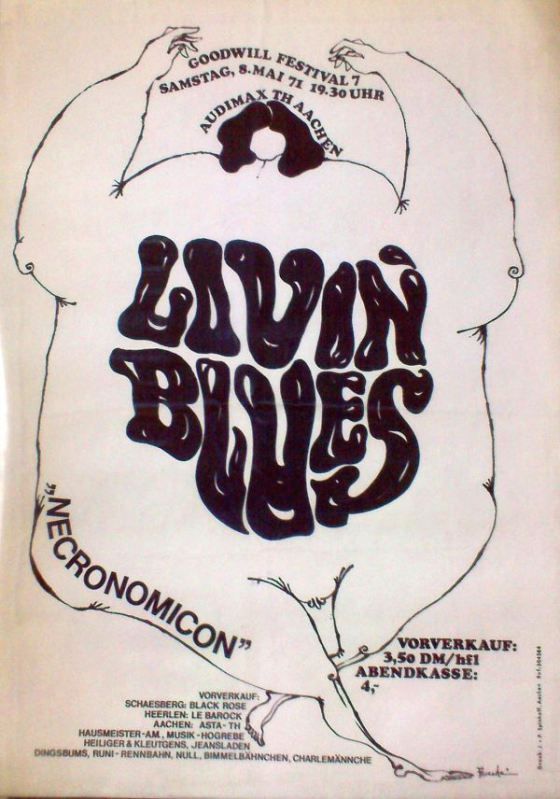
May I dare to say that your album is among the very best German private press releases. It’s very unique and a certain degree of “amateurism” adds a special flavour to the sound. How does it feel that you probably have a bigger worldwide audience for your music in 2021 than you had in the Seventies?
It feels good and this steady and maybe even steadily growing appreciation of our music was one of the reasons that we had the motivation for a reunion in 2012 (starting with rehearsals in 2010).
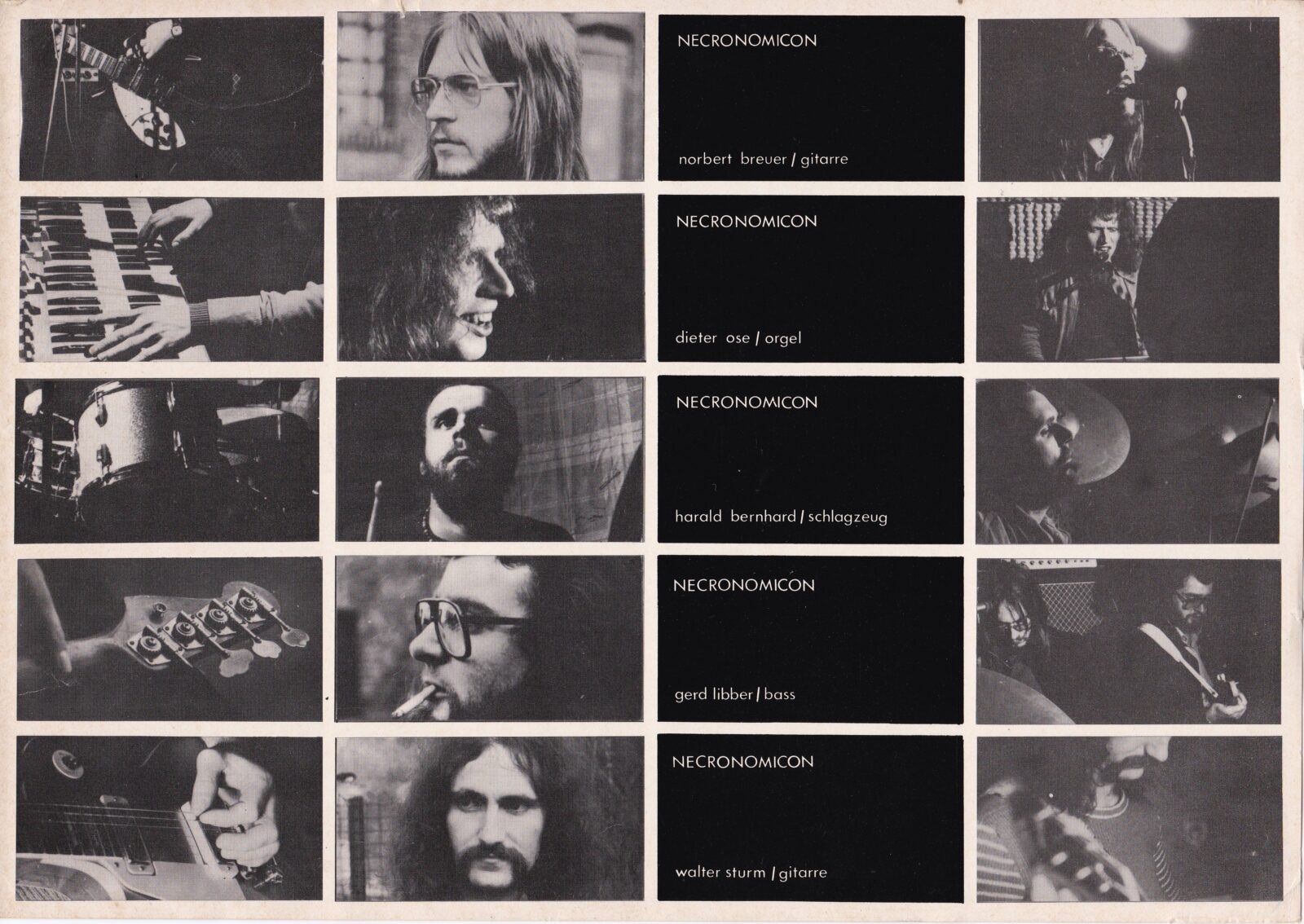
Who found the recordings behind the ‘Live in Concert 1973’ release?
When we were looking for unpublished material for our first LP after the reunion, we remembered that there was an earlier version of the song ‘Die Stadt’, later on called ‘Stadt II’, which was not recorded for ‘Tips zum Selbstmord’. The musical parts in fact had been studio recorded in 1972, but the tapes were lost during a water penetration in the studio some years ago. Unfortunately we had no documentation of the song and no memory of it besides the title and the first line of the lyrics. I remembered that we had performed the song twice, once during the concert where the Rufus Zuphall members contacted me, and once during an invitation to do a concert in the “Neue Galerie – Sammlung Ludwig” (Gallery of Modern Arts) in Aachen. The head of this art gallery Wolfgang Becker regularly organized “happenings” and rock concerts in the ballroom of the old Spa Hotel in Aachen. It was our last concert with the lineup with Fistus Dickmann and before I left for Rufus Zuphall.
One Sunday morning in 2012, when I was daydreaming in my bed, I suddenly had the vision of a recording machine placed in the rooms of the “Neue Galerie” during our concert in 1973. We never had been consciously aware that our concert might have been recorded. Thus, this vision must have arisen from my subconsciousness. Thus I contacted the former director of the “New Gallery”, now director of Aachen’s famous art museum “Ludwig Forum”. After some attempts he made contact with the head of the library of the “Ludwig Forum”. She called me and told me that in fact there were a number of tapes in their stocks but there were no labeling on the tapes, nor did they have a tape machine to hear what was on the tapes. Thus, I made a date to go there with my own tape machine and after many frustrating hearing sessions we found the recording on the last tape which I had put aside, because it was the only one with a label. Strangely the label said that it was a recording of “The Giants”, which was another rather well known band in the 70s in Aachen and surrounding. When I listened to this tape in the end, I of course expected to hear the Giants and was surprised that their first song reminded me of the Dutch bands “Focus” and “Exception”. In fact, I did not recognize that this was our own initiating song which our keyboard player had only written for this concert (‘Overture’). Only when I heard the second song ‘Die Stadt’ it was clear that we found the lost recording of 1973 including the forgotten track ‘Stadt II’…
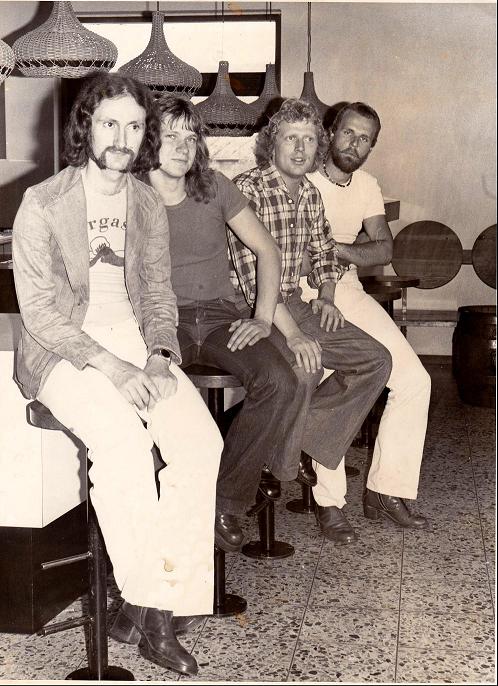
‘Vier Kapitel’ includes material both prior to, and after your album. I can hear so many interesting ideas from those bonus tracks that I wonder what would have happened if you had been given a chance to record for a major label back then…
Some songs from these bonus tracks were taken as a base for the 2012 album ‘Haifische’ (‘Wenn die Haifische Menschen wären’, ‘Haifisch Gedanken’, ‘Wiegenlied’, ‘Epilog’). The lyrics of two of these songs were based on a novel by Bertolt Brecht. We were prohibited to publish the Brecht lyrics in our songs. Thus we had to do new lyrics, but many of the old musical ideas were used for the songs, ‘Wenn die Menschen wie Tiere wären’ und ‘Wann kommt der Tag’. We never seriously planned to cooperate with a professional label and – in fact – our only attempt to do so in the 1970s (contact with the “Pilz label” which published the second record of Rufus Zuphall) revealed a complete lack of interest for our music.
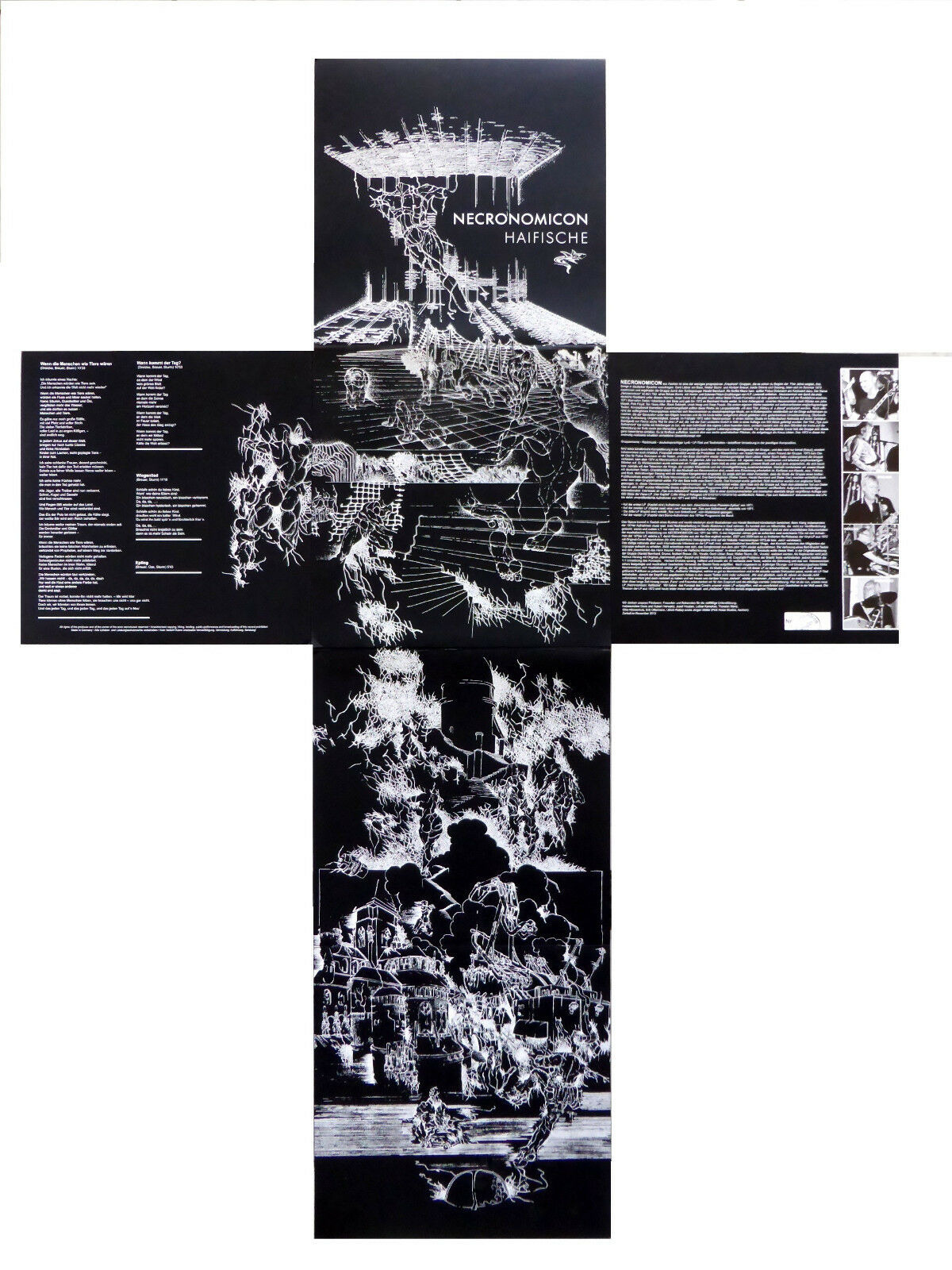
‘Strange Dreams’ contains 1976 recordings which sounded a bit more commercial if I may say so…
With the 1976 lineup music became less complex, a little bit more “commercial”, but never changed over to any mainstream style. Most of the compositions were done by Dieter Ose, one by myself. Bernd Oppitz was the brother of a guy with whom I had done some blues and rock sessions parallel to playing with Necronomicon and Rufus Zuphall. He was a very good bass player with a brilliant bass sound. With this lineup we never planned to produce a record, but there were some semi-professional recordings as a demo. After the untimely death of Dieter Ose in 2007 at the age of only 54 I decided to studio rework the recordings and publish them as an homage to Dieter Ose.
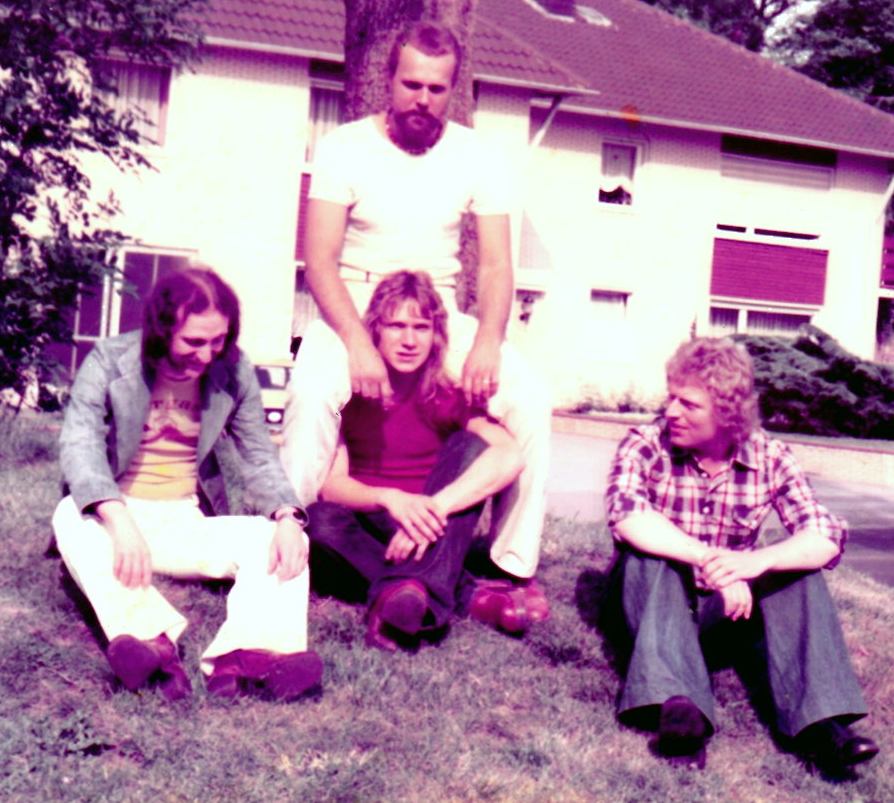
What do you recall from the reunion? ‘Haifische’ resulted in newly recorded previously composed tracks from the early 1970s. Often I find it a bit hard to listen to when a band changes their sound because so many years passed, but you decided to stay the same sound-wise.
We never lost contact completely, because we had to make decisions on CDs and reissues. On ‘Vier Kapitel’ we had published shortened versions of our 1973-1976 songs. Unfortunately the recording quality was rather poor because it was never planned to use these demonstration tapes for publication. When I was browsing through my archives in order to produce the ‘Strange Dreams’ CD in 2007, I listened to a tape which I formerly put aside because it had the label “Carnival Music”. Instead, it was a recording of one of our last concerts in 1974. This newly detected tape had the songs in full original length. Unfortunately the recording quality was even worse than that of the tapes used for ‘Vier Kapitel’. Reworking in a studio for publication was impossible. Thus we met discussing what to do. We decided to try a reanimation of Necronomicon, be it only to work on these redeemed songs in order to prepare them for a studio recording. The problem was that some of us stopped playing their instruments in the 70s and 80s. Fortunately in the meantime there was a great recording studio in Aachen, which we could ask for help and where we finally made all our recent recordings in professional quality. It was a logical conclusion to try to record these 1970s songs in a sound as close to the original as possible. Nevertheless, due to the professional recording qualities, the sound is more “cultivated” and less raw than in 1972 but we loved the record very much. We never expected to get such a result after all this time.
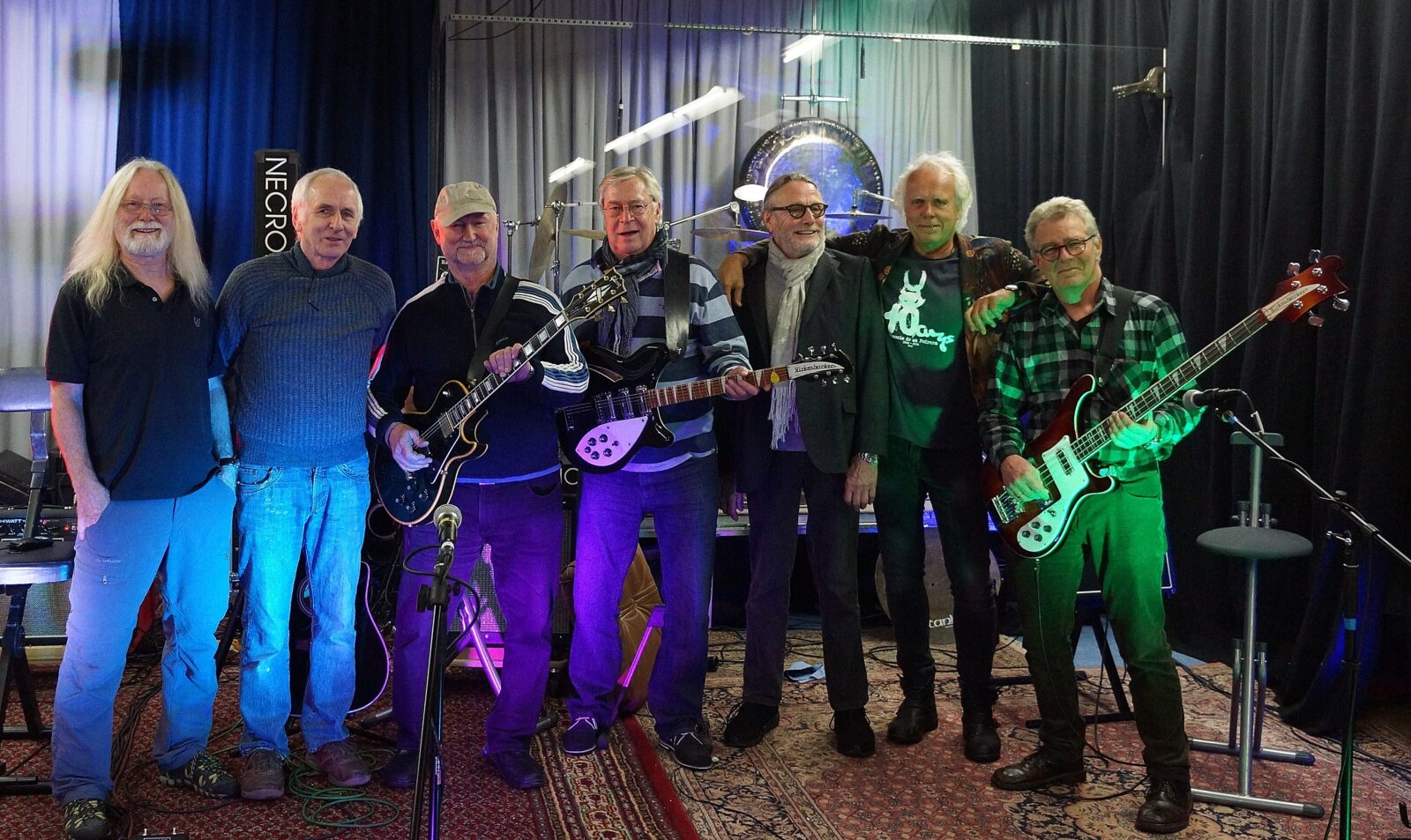
What can you say about the 2017 ‘Verwundete Stadt’?
‘Verwundete Stadt’ gave us both the opportunity to do a professional and reworked version of the lost 1972 song ‘Stadt II’ (now: ‘Trostlose Stadt’) and of the 1974 anti-war song ‘Alle Jahre wieder’ (originally written against the Vietnam War) and to record three newly composed songs. We loved to rework ‘Stadt II’, because it had wonderful melodic passages, jazzy parts and some “Gentle Giant” feeling during the transit between rocky and jazzy passages.
The song we like most is ‘Licht und Schatten’, because in our opinion perfect changes between soft and rocky elements, representing the glamorous and miserable districts of modern towns. ‘Frühling in Fukushima’ was written under the impression of the nuclear disaster in Fukushima, but tries to give some hope with “spring feelings” even in this disastrous situation. We are very happy that Karl Swiontek, who normally is our “technical magician” also wonderfully plays flute and he perfectly gives an “asiatic” feeling to this song.
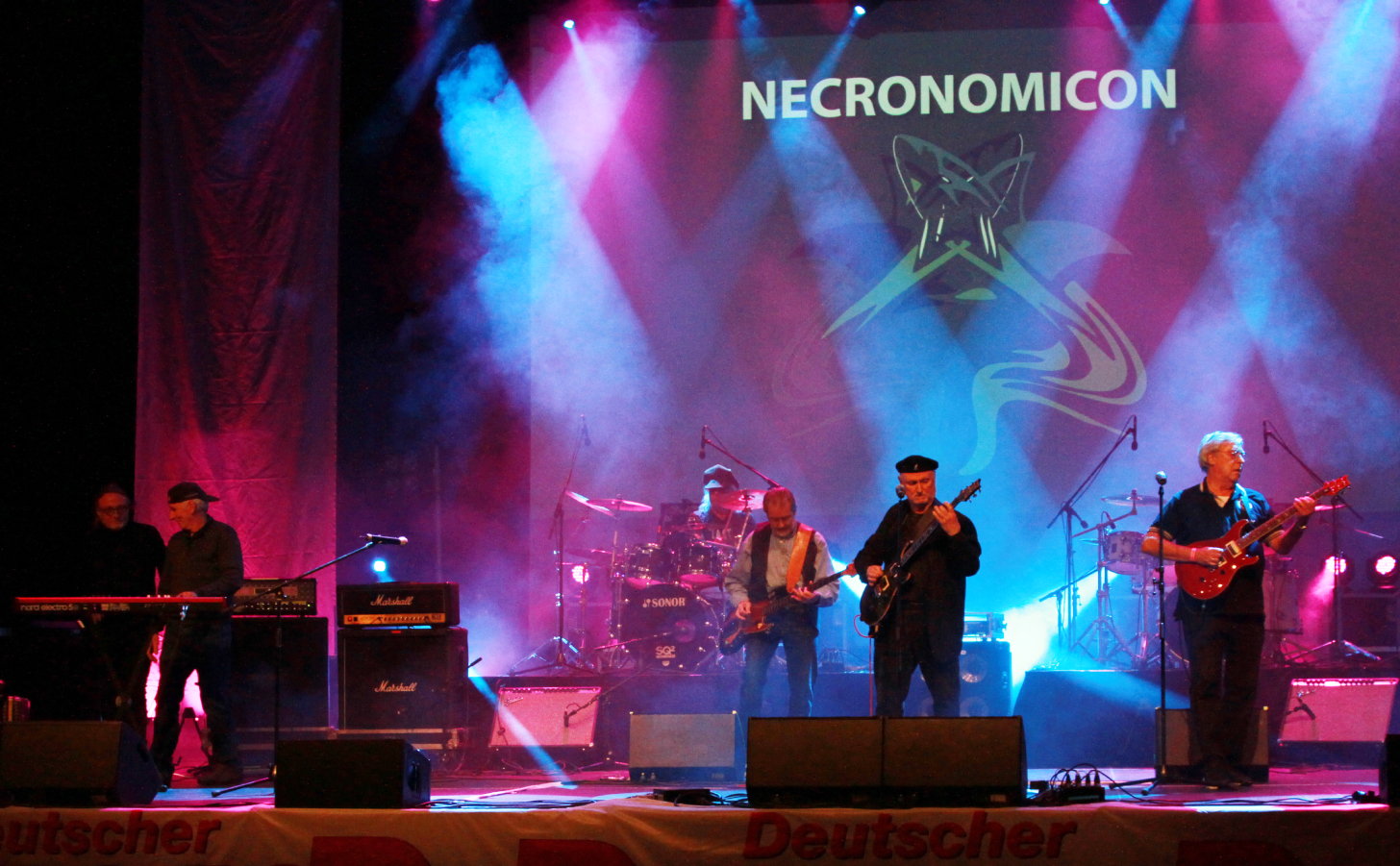
I have to ask, were you influenced by psychedelics back then?
Never. We know that the band name “Necronomicon” might point into this direction, but our explanation always was that – while Lovecraft’s Necronomicon deal with fictitious horrors, it was always our goal to increase people’s awareness for real horrors in our real world which still need to be addressed after so many years.
Is there any unreleased material?
There is, but our next projects are an official rerelease of ‘Tips zum Selbstmord’ in original sound quality taken from the original tapes and a “Live LP” of recordings done on a concert in 2019.
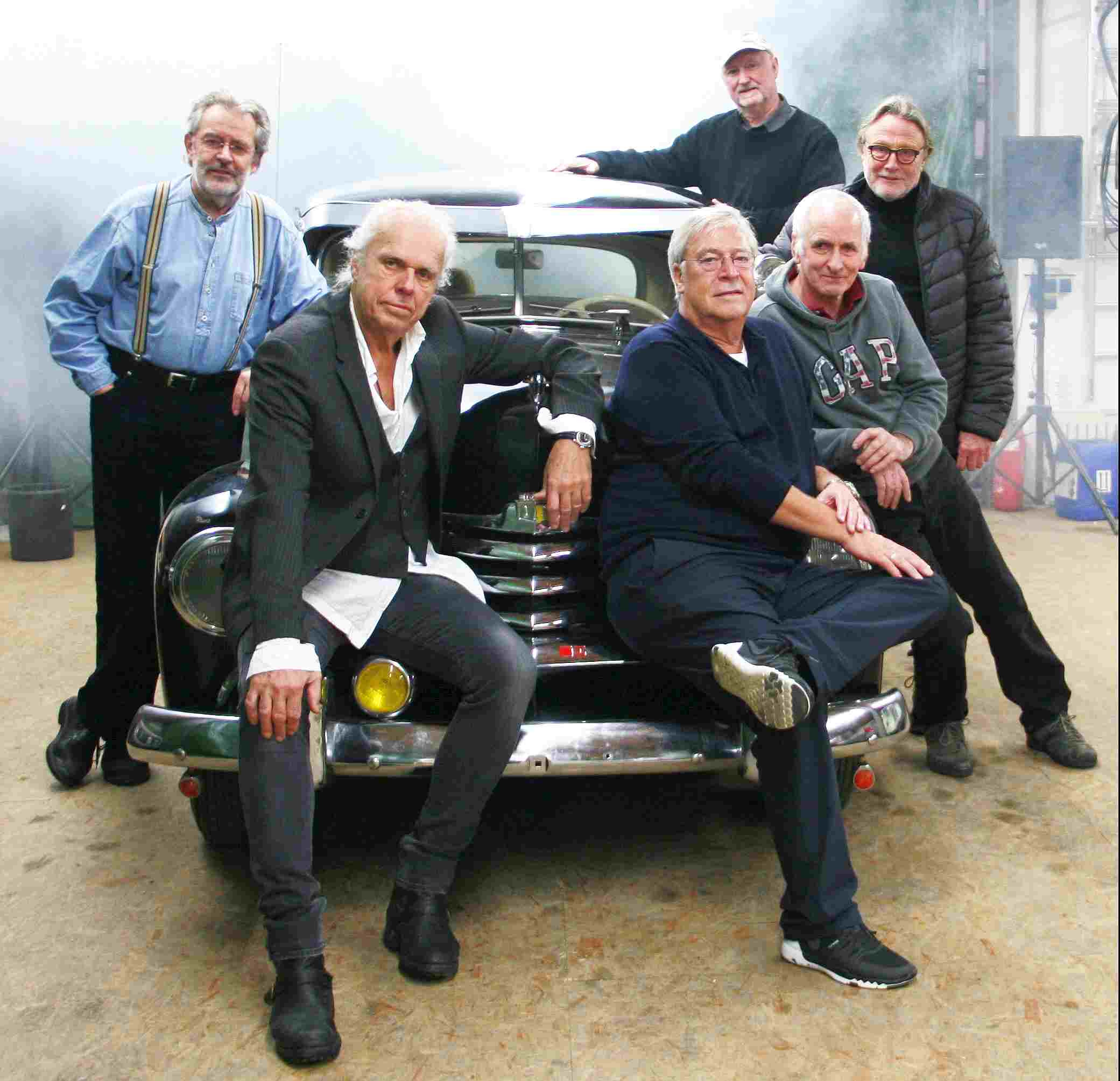
Thank you for taking your time. Last word is yours.
We would like to thank our long standing fans. They gave us the power and the motivation to stay “on the project” for such a long time and to (hopefully) start again after the nearly two year pandemic pause. 2022 is the 50th anniversary of ‘Tips zum Selbstmord’…Let’s see what comes!
Klemen Breznikar
Necronomicon Official Website / Facebook



